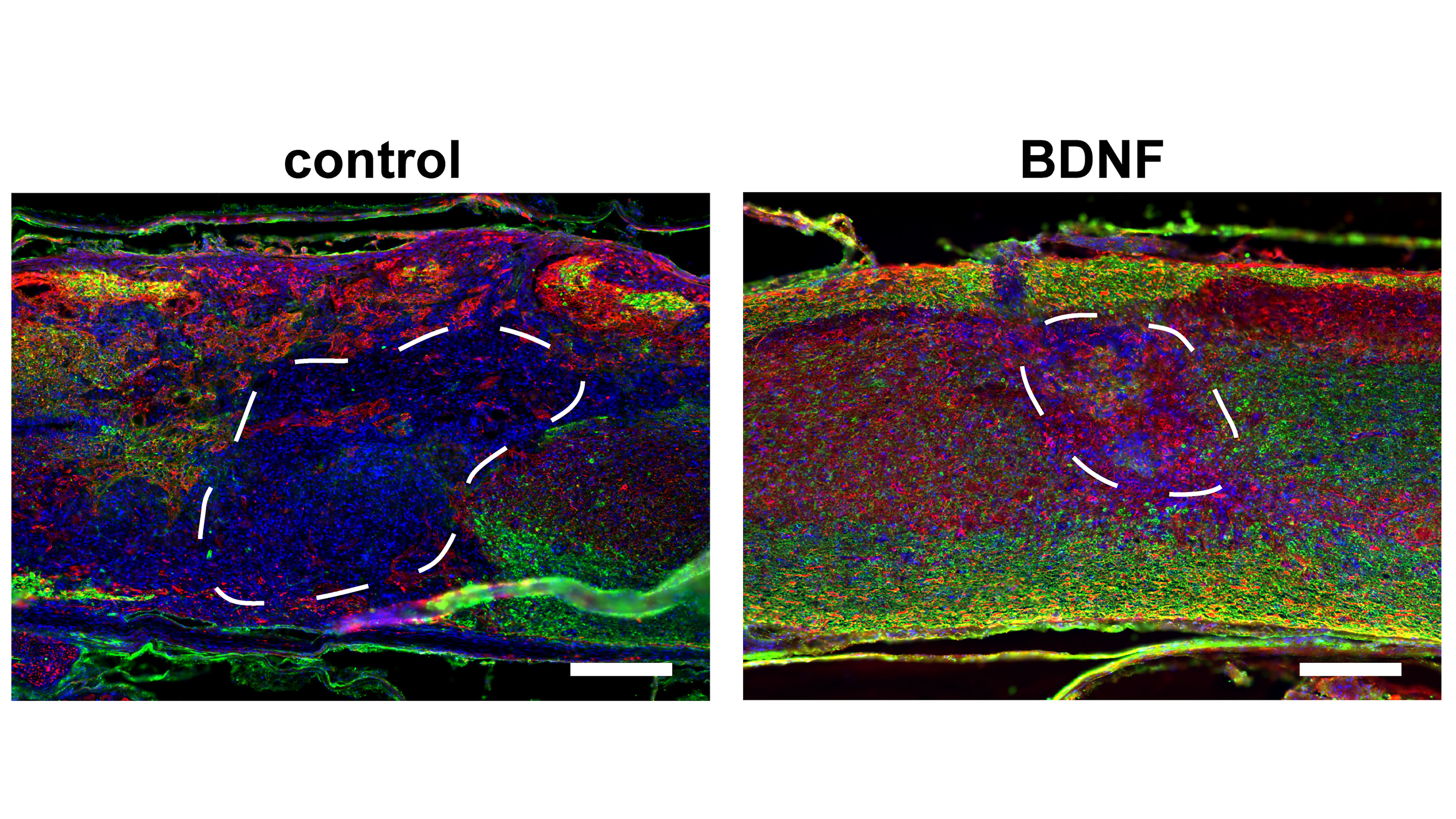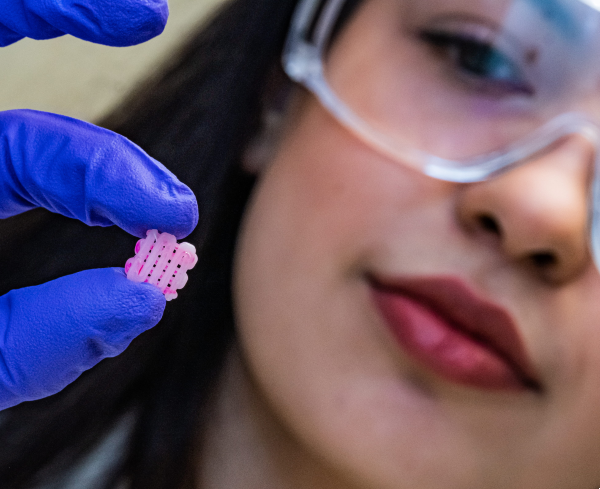Disc-related back pain may one day meet its therapeutic match: gene therapy delivered by naturally derived nanocarriers that, a new study shows, repairs damaged discs in the spine and lowers pain symptoms in mice.
Tag: Tissue Repair
Wound-homing molecule accelerates tissue repair
One of the key goals of medical science is to speed up the healing of tissue injuries in a way that would not enable the forming of less functional scar tissue in the affected areas.
Small RNAs take on the big task of helping skin wounds heal better and faster with minimal scarring
New findings in The American Journal of Pathology, published by Elsevier, report that a class of small RNAs (microRNAs), microRNA-29, can restore normal skin structure rather than producing a wound closure by a connective tissue (scar).
‘Super melanin’ heals skin injuries from sunburn, chemical burns
Scientists developed synthetic melanin cream that can heal skin damage and promote repair. It works by scavenging free radicals that are produced by injured skin.
A New Frontier: Skin Cell Study Looks at Regenerative Medicine in Space
Human skin cells provided by Marjana Tomic-Canic, Ph.D., director of the Wound Healing and Regenerative Medicine Research Program at the University of Miami Miller School of Medicine, were launched to the International Space Station for advanced testing as part of a research voyage by CUTISS, a Swiss life sciences company.
Nanofiber-Hydrogel Loaded with Stem Cells Shows Success Treating Severe Complication of Crohn’s Disease
In a new study using a rat model of Crohn’s disease, a biodegradable hydrogel composite loaded with stem cells, developed by Johns Hopkins Medicine researchers, in a collaborative effort with the Whiting School of Engineering, has shown significant success in treating perianal fistulas (PAF) — one of the many complications of Crohn’s disease.
Silicon nanochip could treat traumatic muscle loss
Technology that can change skin tissue into blood vessels and nerve cells also shows promise as a treatment for traumatic muscle loss.
New Research Reveals How the Heart Repairs After a Heart Attack
Immune response and the lymphatic system are central to cardiac repair after a heart attack, according to a study from Ann & Robert H. Lurie Children’s Hospital of Chicago and Northwestern University Feinberg Cardiovascular Research Institute. These insights into the basic mechanisms of cardiac repair are the first step towards developing novel therapeutic approaches to preserve heart function. Findings were published in the Journal of Clinical Investigation.
Flexible printable electrical patches for accelerated wound healing
There are myriad ways in which people can experience physical wounds – from minor scrapes and abrasions to the effects of surgery, critical injuries, burns and other major traumas.
Piezo1 Possible Key to Supporting Muscle Regeneration in Duchenne Muscular Dystrophy
Tracing the impact of a single protein, Piezo1, Penn researchers found that restoring it in muscles affected by Duchenne muscular dystrophy could improve their ability to heal efficiently
Spontaneous Mammary Neoplasia, Cannabidiol Exposure, Aryl Hydrocarbon Receptors, and More Featured in July 2021 Toxicological Sciences
Toxicological Sciences delivers the latest toxicology research in the July 2021 issue. The issue features investigations in delivers the latest toxicology research in areas such as exposure to delta-9-tetrahydrocannabinol and cannabidiol, effects of ENDS vapors on amino acid metabolism, and more.
Tissue Repair, Mitochondrial Function and Wound Healing Explored in 2021 APS President’s Symposium
Top researchers in physiology will present a three-part series exploring cellular regulation of mitochondrial function, tissue repair and wound healing. The APS President’s Symposium Series will be part of the APS annual meeting at Experimental Biology 2021, which will be held on a virtual platform April 27–30.

Injectable Porous Scaffolds Promote Better, Quicker Healing After Spinal Cord Injuries
In APL Bioengineering, researchers have developed materials that can interface with an injured spinal cord and provide a scaffolding to facilitate healing. To do this, scaffolding materials need to mimic the natural spinal cord tissue, so they can be readily populated by native cells in the spinal cord, essentially filling in gaps left by injury. The researchers show how the pores improve efficiency of gene therapies administered locally to the injured tissues, which can further promote tissue regeneration.
Study Explores Role of Extracellular Vesicles in Tissue Repair after Heart Attack
Article title: CDC-derived extracellular vesicles reprogram inflammatory macrophages to an arginase 1-dependent pro-angiogenic phenotype Authors: Kyle I. Mentkowski, Asma Mursleen, Jonathan D. Snitzer, Lindsey M. Euscher, Jennifer K. Lang From the authors: “Our study was designed to gain mechanistic insight into the…

Leveraging layers for enhanced tissue repair
Bioengineers have created a 3D-printed scaffold designed to regenerate complex tissues composed of multiple layers of cells with different biological and mechanical properties.